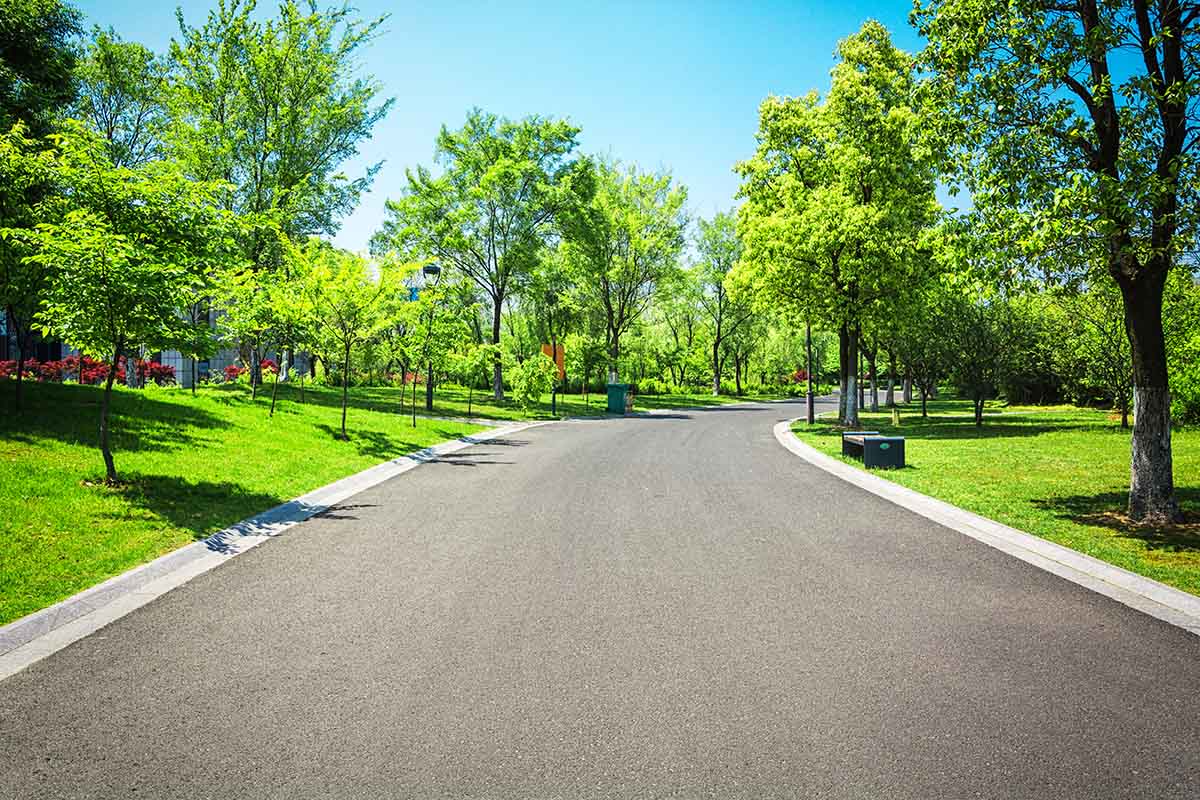How Asphalt Sealcoating Works
Asphalt pavements are a very popular choice for driveways, parking lots, and other paved surfaces. They are durable and relatively easy to maintain. However, like all paving materials, asphalt pavements must be regularly sealcoated to protect them from the elements.
Sealcoating helps to fill in small cracks and pores in the asphalt, which can otherwise allow water and other liquids to seep in. This can lead to damage to the pavement, including crumbling and potholes.
Sealcoating also helps prevent sun damage, which can cause the asphalt to dry out and become brittle. In addition, sealcoating reflects heat away from the pavement, helping to keep it cooler in the summer months. For these reasons, it is important to have your asphalt pavement sealcoated regularly.
So, how does asphalt sealcoating work?
Cleaning the Surface
The first step is to clean the surface of the pavement. This is done to remove any dirt, debris, or oils that may be present on the surface. These contaminants can prevent the sealcoat from adhering properly to the asphalt.
Pressure washing is usually the best way to clean an asphalt surface. A power washer can remove all kinds of dirt and grime quickly and easily.
Applying a Prime Coat (Optional)
A prime coat is a thin layer of asphalt emulsion applied to the surface before the sealcoat. It helps the sealcoat adhere better to the pavement and provides extra protection against water damage. However, not all pavements need a prime coat. A prime coat may not be necessary if the surface is in good condition and has been recently sealcoated.
Applying the Sealcoat
The next step is to apply the sealcoat to the pavement. This can be done with a brush, roller, or sprayer.
When using a brush or roller, it is important to work the sealcoat into all the cracks and crevices on the surface. Otherwise, water can still seep in and cause damage. If you are using a sprayer, hold it about 12 inches away from the surface to avoid over-application.
Sealcoating should be applied in thin, even coats for best results. It is important not to apply too much, as this can cause the sealcoat to crack and peel.
Letting the Sealcoat Dry
Once the sealcoat has been applied, you must let it dry completely before allowing traffic on the surface. Depending on the temperature and humidity, this can take anywhere from 2 to 24 hours. It is best to wait until the sealcoat is completely dry before using the pavement, as driving or walking on a wet sealcoat can damage it.
Important considerations for asphalt sealcoating
Now that we know how asphalt sealcoating works let’s go over a few important considerations to keep in mind.
Weather Conditions
According to the Jacksonville experts from CSG Sealcoating, asphalt sealcoating can be done in most weather conditions. However, there are a few things to keep in mind. For example, the sealcoat can dry too quickly and crack if it is too hot outside.
Conversely, if it is too cold, the sealcoat will take longer to dry and may not adhere properly to the pavement. Ideally, you want to apply the sealcoat when the temperature is between 60 and 80 degrees Fahrenheit. Another thing to consider is precipitation. If it is raining or snowing, you will need to wait until the weather clears before sealcoating.
Pavement Condition
As we mentioned earlier, not all pavements need to be sealcoated. If the surface is in good condition, with no cracks or damage, sealcoating may not be necessary. However, if the pavement is showing signs of wear and tear, it is a good idea to have it sealcoated. This will help prevent further damage and extend the life of the pavement.
Traffic Conditions
It is important to keep traffic off the sealcoat until it is completely dry. Otherwise, you risk damaging the sealcoat or causing it to peel up from the pavement. If you need to use the pavement before the sealcoat is completely dry, you can try to minimize traffic by putting up signs or cones.
Cost
Asphalt sealcoating is a relatively inexpensive way to maintain your pavement. However, the cost will vary depending on the size of the area and the condition of the pavement. If you are sealcoating a large area or a surface in bad condition, it will likely be more expensive than if you are sealcoating a small area or a surface in good condition.
How Asphalt Sealcoating Works: Hiring a Professional
Asphalt sealcoating is not a difficult task, but it is best left to professionals. They have the experience and equipment to do the job quickly and efficiently. Hiring a professional also means you won’t have to worry about doing the job yourself or making mistakes that could damage your pavement.
Asphalt sealcoating is an important part of maintaining your pavement. By following these simple tips, you can ensure that your pavement will stay in good condition for years.




















